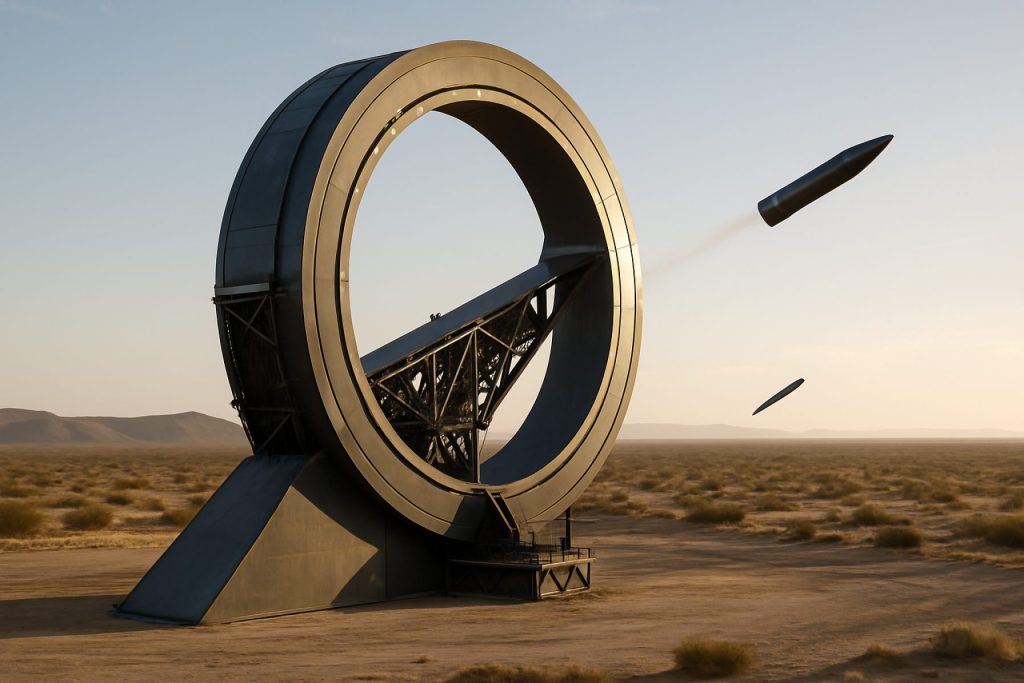
The Space Launch Race Heats Up: How SpinLaunch’s Centrifugal Cannon Could Redefine the Satellite Industry by 2025
SpinLaunch’s centrifugal system slashes costs, cuts emissions, and might dethrone SpaceX as the low-cost leader in satellite launches.
Quick Facts
- Launch Cost per Kg: $1,250–$2,500 (vs. $2,700+ for SpaceX Falcon 9)
- Satellite Record: Potential to launch hundreds in one go
- Speed: Payloads accelerated up to 5,000 mph (Mach 6.5+)
- Emissions: Near-zero greenhouse gases per launch
SpinLaunch is firing up a new space race. The California-based startup is shaking up the aerospace world with its audacious centrifugal cannon technology, capable of launching satellites into orbit without the fiery explosions and heavy emissions of conventional rockets.
Instead of brute-force rockets, SpinLaunch relies on a vacuum-sealed chamber with a spinning arm that whips satellites to blistering speeds before hurling them skyward. Imagine a space slingshot the size of a building, flinging pancake-flat microsatellites into low-Earth orbit (LEO) by the hundreds—and at a fraction of the cost.
Backed by substantial investor confidence, SpinLaunch says its next-gen satellite system could set a new world record for simultaneous launches and push powerful competitors like SpaceX to rethink the economics of getting to space.
SpaceX had a good run leading the commercial launch market, but 2025 is shaping up to be the year when tradition may yield to innovation.
What’s New: How Does SpinLaunch’s Cannon Work?
SpinLaunch’s launch system uses a vacuum chamber to minimize drag while a massive kinetic arm rapidly spins its payload. The energy builds rapidly—up to 10,000 Gs—before the door bursts open and the ‘launch bus’ catapults its stack of satellites into the upper atmosphere.
Recent tests in New Mexico have proven the concept: ten suborbital vehicles have already flown, with the latest launch in late 2022. Now, SpinLaunch is gearing up for orbital demonstration flights that could mark the dawn of the “spin-and-fling” era.
Unlike chemical rockets, SpinLaunch’s launches are virtually emission-free. No fuel-guzzling boosters. No plumes of greenhouse gases. Just pure mechanical force—and the shocking spectacle of satellites being literally thrown into space.
For more on space innovation, check out NASA’s latest tech updates.
Q&A: Can SpinLaunch Really Beat SpaceX—and Is It Safe?
Q: Is SpinLaunch’s method more cost-effective than traditional launches?
A: Yes. With estimated costs between $1,250 and $2,500 per kilogram, SpinLaunch could cut launch prices by more than half compared to SpaceX’s Falcon 9.
Q: How does it help the environment?
A: The system ditches rocket engines and fossil fuels, dramatically lowering greenhouse emissions and nearly eliminating launch-stage debris.
Q: Is it ready for full-on commercial launches?
A: The tech has already survived multiple suborbital trials. SpinLaunch plans to launch its “Meridian Space” constellation—hundreds of pancake-shaped satellites stacked in a lightweight array—by next year.
Q: Are there any drawbacks?
A: While costs and pollution drop, soars in satellite deployments in LEO might increase risks of collisions, clutter, and interference with astronomy. SpinLaunch and the wider industry must tackle these as launches ramp up.
How Will It Change Satellite Internet—and Everyday Life?
SpinLaunch’s “Meridian Space” constellation aims to bring high-speed, low-latency internet worldwide, narrowing the digital divide and making space tech more democratic. With more affordable and sustainable launches, small companies, startups, and even schools could gain regular access to space-based tools.
If SpinLaunch can scale up to five launches per day as planned, commercial satellite deployments might jump dramatically—fueling new advancements in remote sensing, 5G, global communications, and earth observation.
For more about commercial space opportunities, visit Blue Origin and European Space Agency.
How Can SpinLaunch Avoid Filling Up Orbit with Junk?
While revolutionizing launch technology, SpinLaunch will need to work with global partners to develop better tracking, deorbiting, and debris-mitigation strategies. Collaborating with regulators and science organizations could set the bar for sustainable space.
What’s Next for 2025 and Beyond?
With its 2025 orbital demonstration on the horizon, SpinLaunch is gunning for an industry-changing moment. As the race intensifies, all eyes will be on whether this giant mechanical slingshot can deliver on its bold promises—and transform space access for the planet.
Get ready: The future of affordable, clean, and frequent satellite launches is near. Don’t miss this space transformation—track SpinLaunch’s progress and shape your space strategy now!
Checklist for Staying Ahead in the Space Launch Revolution:
- Watch for SpinLaunch’s first orbital demo in 2025
- Compare launch costs and sustainability metrics vs. major competitors
- Assess impacts on satellite internet, comms, and research sectors
- Monitor new regulations and industry guidelines for debris management
- Explore opportunities in the expanding commercial launch market



